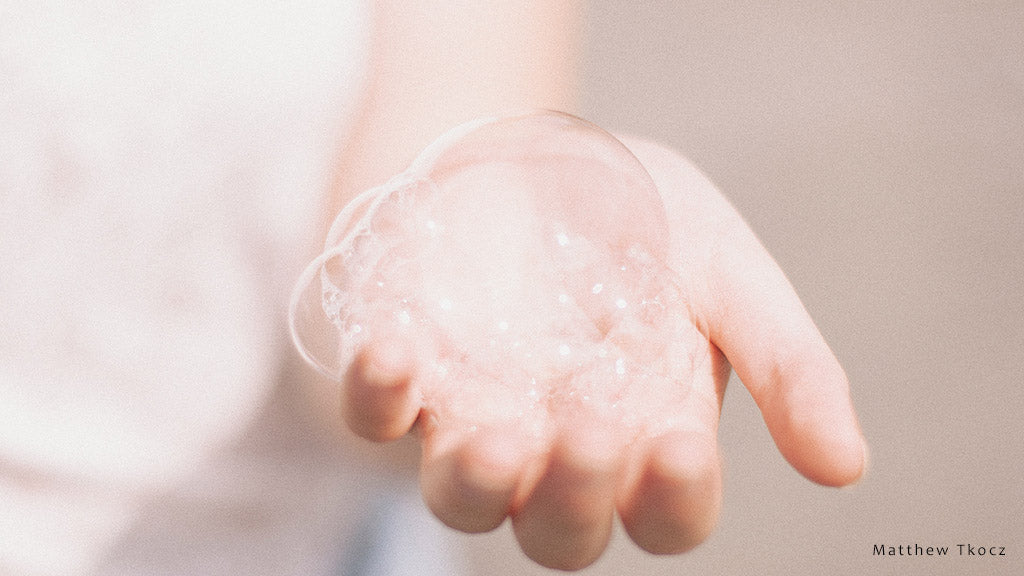
You’re lying back in a warm bath surrounded by candles, a cold glass of wine in your hand. Islands of bubbles meander over the water’s surface forming continents of foam over your nether regions.
How does that make you feel? Relaxed? Happy?
What if I told you that you could give you that same experience - but sans bubbles. I could promise you that on exiting your foam free bath your skin would feel divinely soft and moisturised. Would you take the deal?
Millions wouldn’t because we are nation addicted to bubbles.
The foam bath was invented in the 1930s and sold as the ultimate cleanse with a layer of bubbles that would insulate the water surface and keep the water warm. In the ‘60s bubble baths were marketed as a fun way to get kids clean with brands like Matey and Snoopy hyping the craze.
Fast forward 50 years and we’re still hooked on bubbles, be they in a bath or in a shower. The belief that bubbles mean clean has entered our shared understanding. Dove has even invented a shower foam with the bubbles already built in to the product!
But are bubbles bad? To assess that we need to understand how bubbles are made and what we are giving up to have them.
Back in the 1930s bubbles were made by pumping air into the bath, like a soap filled jacuzzi. Nowadays there are range of surfactants (detergents) that have been developed to produce the lather we crave. Some are designed to produce the initial flash foam, some to stabilise big blousey bubbles and some to prolong the life of smaller sudsy bubbles. Blending these surfactants to produce the perfect lather is big science nowadays. They even use surfactants to produce a foamy head on beer.
The best surfactant for producing stable foam is the vilified Sodium Lauryl Sulphate (SLS). It is a star of many foaming bath products because it works in hard water, is cheap and adds a viscosity to bubble baths lending a luxurious feel. It’s vilified because it has a small molecule size that can penetrate and irritate the skin.
Surfactants are designed to be attracted to water and oil on the skin. That’s how they get us clean, by grabbing hold of both and then getting washed down the plug hole. Throw them in a bath of oil free water and they will form bubbles which are just a layer of surfactants attached to a layer of water then another inside layer of surfactant.
But what are those bubbles doing? Are they getting us clean? In a word, no. The surfactants are are busy making bubbles and not interested in your oily skin. They are there for marketing.
That’s all fine. Bubbles are pretty. But what are we giving up to have our bubble fix?
Well nourishing oil-filled bath products is one thing. Remember that bubbles are formed by surfactants that are attracted to water - but they are also attracted to oil - if we add too much oil to our bath products the surfactants will bind to the oil, rather than the water, meaning less bubbles. Companies would rather sell you products made with cheap surfactants that produced thick bouquets of bubbles than oil rich shower creams that didn’t foam but actually improved the skin.
If we could wean ourselves off the froth, our skin would thank us for it. If we world accept that our shower cream or bath product would be a little bit less foamy in order for it to be a bit more moisturising our follicles would jump for joy.
It’s time to ban the bubble. Go cold Turkey on froth making molasses. Rise up and take hold of our boring citrus shower gels and Disney branded foam baths and say “I reject thee fake cleanser”, “get behind me stripper of skin oils”. Instead “Come to me bath oils drench my skin in your goodness”, “welcome shower cream sink deeply into my epidermis - for I am free”.
